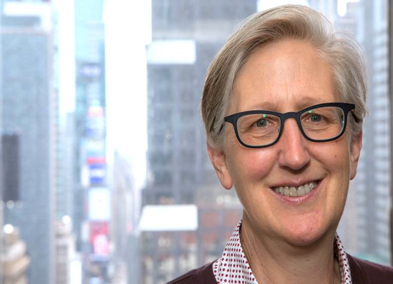The Community Designing Technology Needs to Be As Broad and Diverse As the Community Consuming It!
I am pleased to share with you Heidi Musser’s experiences and insights on diversity in STEM. She is a long-time advocate for gender parity.
Her viewpoints on why diversity is not taking hold in STEM very much align with what we at WOMEN Unlimited see across companies and industries, especially regarding unconscious bias, failure to measure results, and the need for top management to set the tone company-wide. Dr. Rosina L. Racioppi, President & CEO, WOMEN Unlimited, Inc.

Heidi Musser: Consultant
Recently Retired: USAA
Vice President & Division CIO
STEM needs diversity. It is a business imperative.
With just about everything having a technology component, organizations need the brightest and the best minds across gender, race and ethnicity to sustain creativity, to foster innovation and to increase profitability. Unfortunately, it isn’t happening for a number of reasons; but three stand out as particularly insidious to gender parity:
- Women are less likely to come into STEM than they were 20 or 30 years ago
- Unconscious bias is impeding the progress of women in STEM
- We have failed to create much-needed metrics to measure success and address shortcomings
Fewer women coming to STEM
Since I was at Michigan State in the 1980’s, the percentage of women studying engineering at my alma mater has gone from 33% to slightly above 10%. Those were pre-Silicon Valley dot.com days. STEM didn’t beckon with panache, high earnings and lucrative careers. Once interest and salaries in STEM started going up, men began to flock to it, seemingly disproportionately. As the balance shifted, entry for women became more difficult; STEM careers became less attractive for women, and more women began leaving mid-career. Women were feeling shut out. It’s hard to be the only female in the classroom or the conference room, literally and figuratively.
And unfortunately, the dearth of women in STEM continues. In 2015, 25% of the computing workforce were women, and less than 10% were women of color.
Unconscious bias is taking a toll
Both men and women in STEM suffer from unconscious bias. It’s cultural, it’s pervasive and it’s often ignored.
Unconscious bias is like death by a thousand paper cuts. One hurts just a little, so you ignore it. But the cuts keep mounting up over a career. And because each “paper cut”, like being asked to get coffee or take notes, is seemingly insignificant, we tend not to make a big deal out of it. In other words, unconscious bias is made up of subtle acts that seem inconsequential in the moment, but over time create major barriers to a woman’s success.
Unconscious bias has certainly impacted my career in a variety of ways. For example, I’ve often experienced male managers who were reluctant to give me direct feedback. I have had to be very emphatic, insisting they offer specific recommendations for improvement, rather than broad, “good job, you’re doing fine” variety comments. It’s very challenging to grow and advance in an organization without honest feedback and, without insisting on it, women are unlikely to receive it.
Metrics Aren’t In Place
In IT, metrics are everywhere. We measure just about everything: time-to-market, quality, availability, return-to-service, total cost of ownership, IT spend ratio, etc.
That’s why I find it ironic that some leaders in STEM have been reluctant to develop and track metrics for recruiting, hiring and retaining a diverse workforce. In my experience, if you don’t measure it, you can’t change it. Metrics drive both results and accountability; and the bigger the metric, the greater the change.
To truly achieve parity, we need to measure and discuss diversity in a variety of ways. For example, it’s not enough to say, “we have increased the number of women we hired by “x%”. We need to measure at what level they are in the organization…what areas they work in…how far they’ve advanced vis-a-vis male counterparts. Until we measure, we will not be giving inclusiveness the serious attention it deserves.
What Needs to Happen Next
There is no magic bullet to make diversity happen in STEM. And isolated, one-off efforts are not enough for sustained change. However, if I were to pinpoint one place to start, it would be this: Top management needs to really believe the business case for diversity and that it improves the bottom line. They must send a loud and clear message to their entire organization that gender parity is a necessity, not a nicety. Once they do, diversity will take a stronger hold across STEM and we will start to see an all-important sea change:
The Community Designing Technology Becoming
As Diverse as the Community Consuming It!
